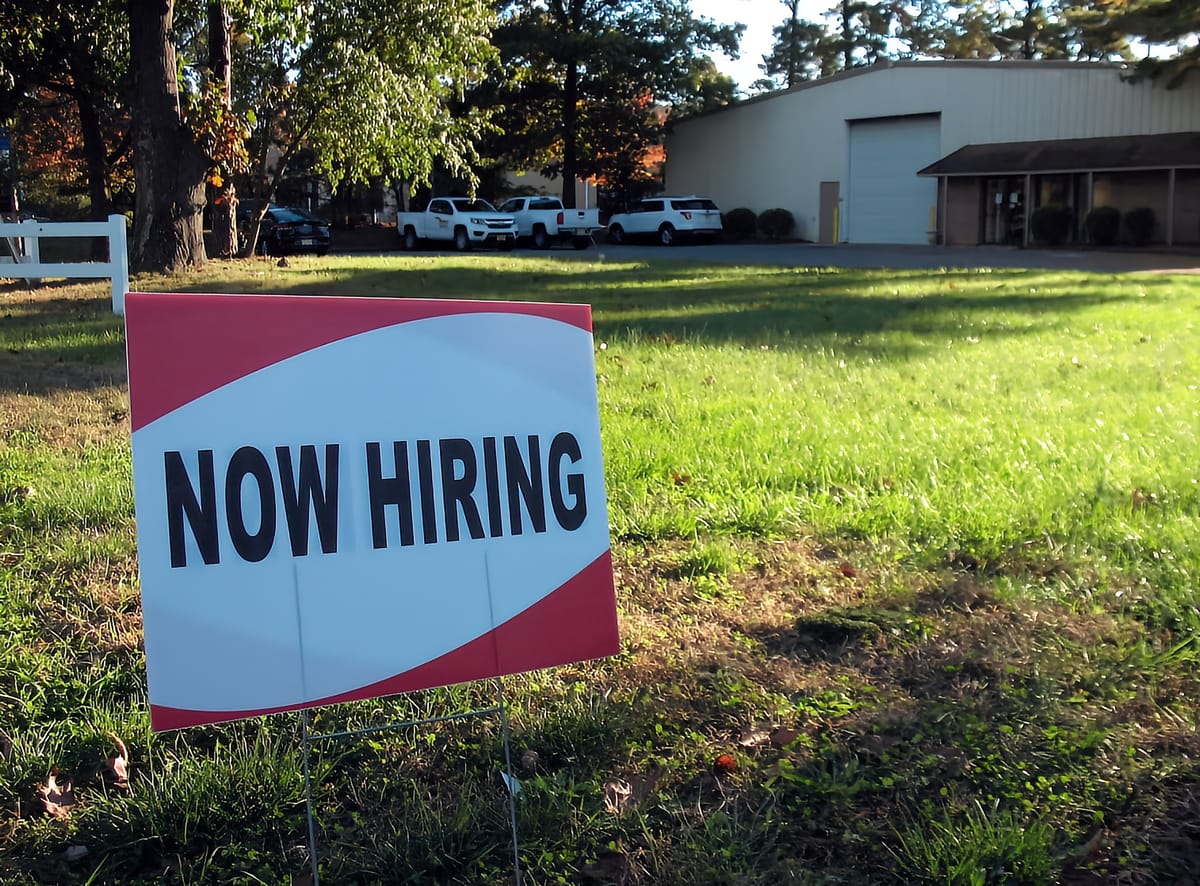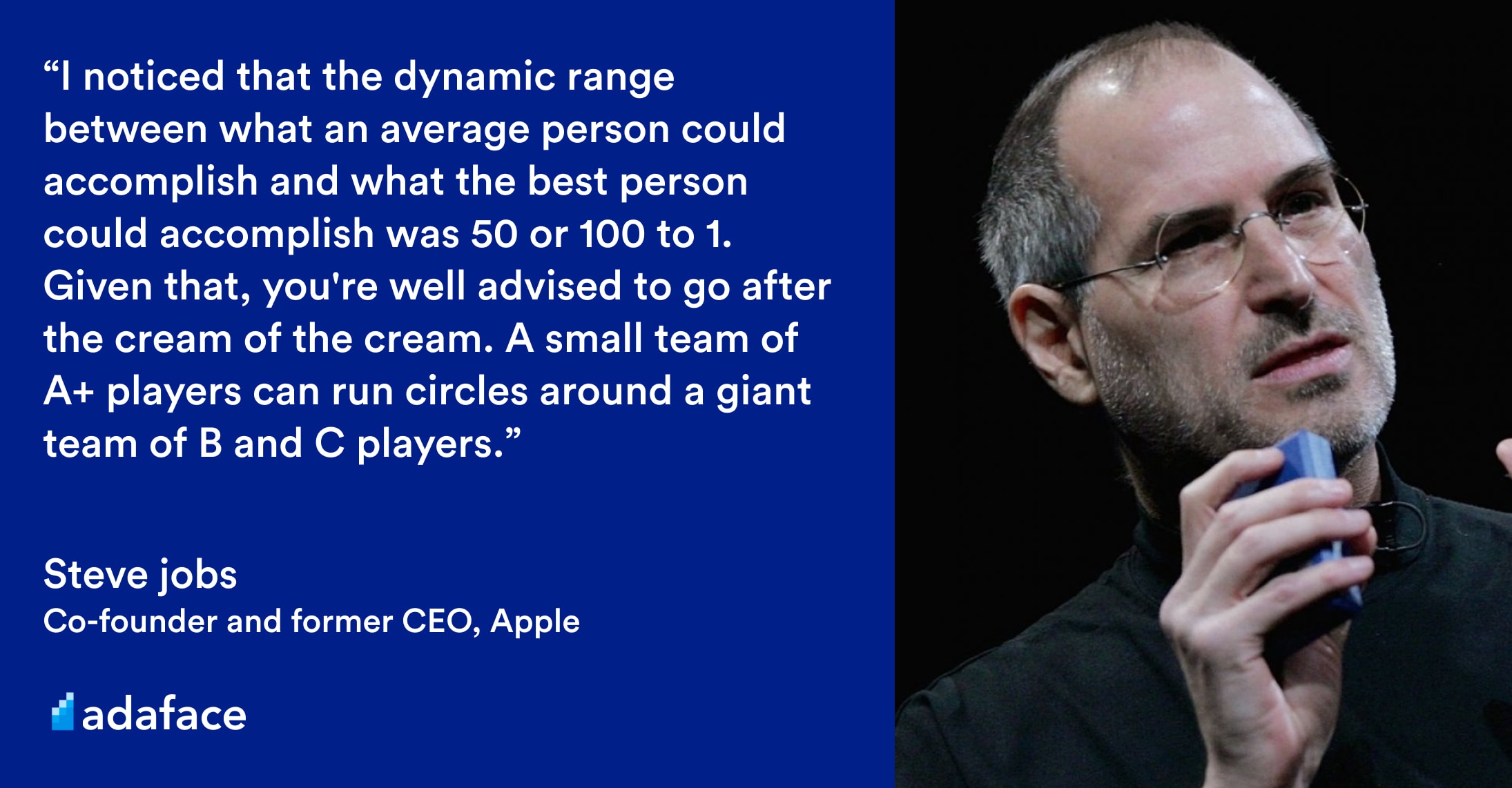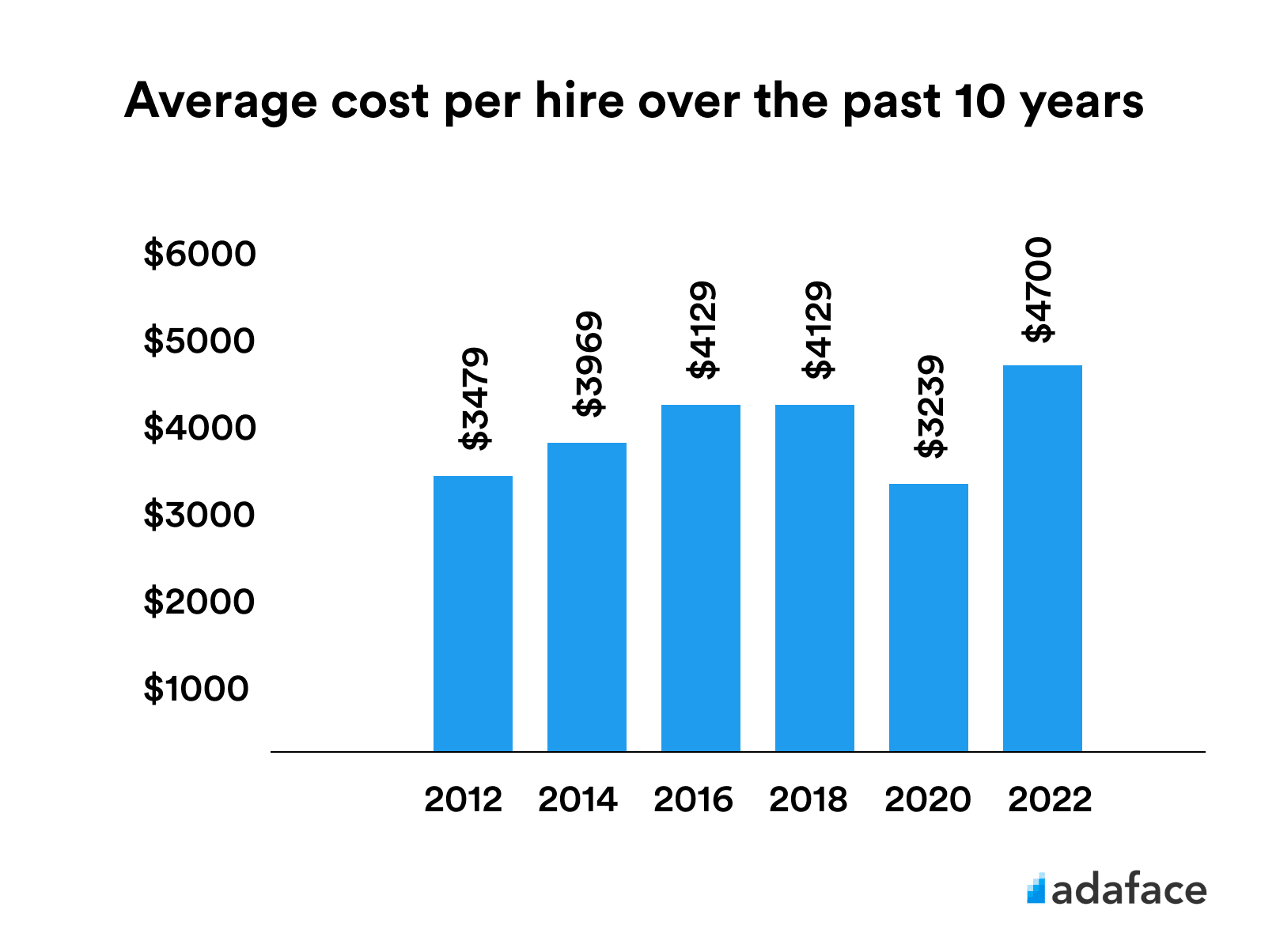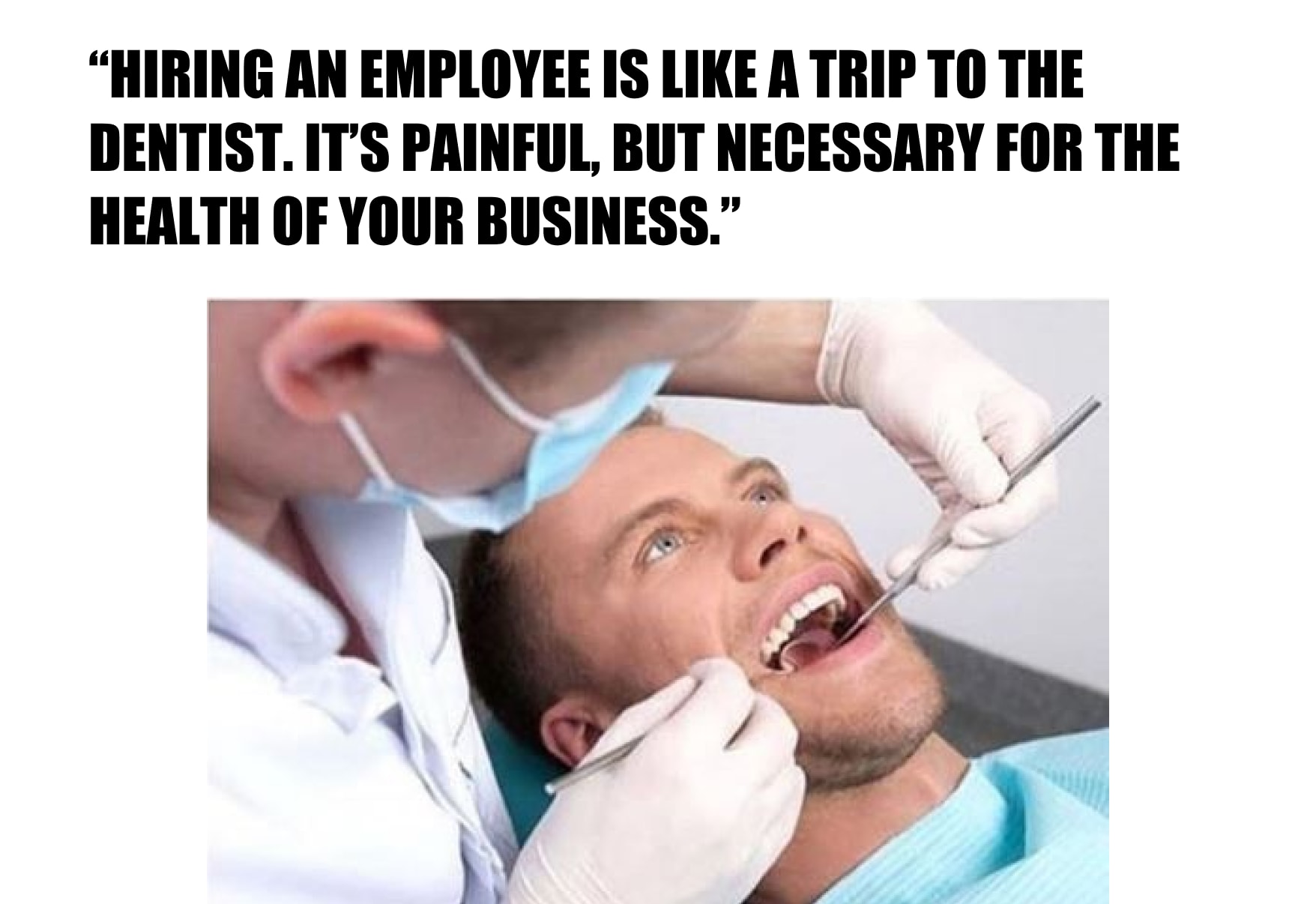The Real Cost of Hiring a New Employee (2024)
Hiring a new employee can be both exciting and nerve-wracking at the same time. But have you ever stopped to think about how much it actually costs to bring someone new onboard? From job postings to background checks, there are many expenses to consider when it comes to the hiring process.


According to SHRM (2022), the average cost of hiring an employee was nearly $4700.
Is this statistic all you were looking for from this blog post? Or did you want to (hopefully?) dive deeper into these costs and try to understand where this is all accumulating from?
Through this post we will help you wrap your head around all the expenses involved in bringing on a new employee.
Let's get started!
One of the most important parts of your company is people. They help in achieving success (or cause failure). Steve Jobs once said,

Jobs emphasized the importance of going after the 'cream of the cream' and building a team of A+ players, even if it may come at a higher cost.
However, the cost of hiring an employee can be a major concern for companies, especially for small businesses and startups with limited resources. The decision of whether to invest in hiring high-performing individuals, even if they come with a higher cost, can be a difficult one to make.
One key point to remember: It's important to find cost-effective ways to hire employees, but not at the expense of hiring the right person for the job.

What constitutes the hiring cost?
When hiring an employee the costs associated with this process can be divded into two parts.
Internal hiring costs
- In-house recruitment staff
- Recruitment systems
- Referral rewards
- Training programs
- Signing bonus
External hiring costs
- Job boards
- Background checks
- Pre-employment assessments
- Recruitment agencies and headhunters
Let's take a look at each of these costs and how they add up. However, these costs may vary depending on the size of your team and the position you are hiring for. Use the same process for your organization to calculate the specific hiring costs that you incur.
In-house recruitment staff
So, you need folks to manage your organization's recruitment process, right? That's where HR professionals or hiring managers come in. They're the ones who'll figure out what skills, qualifications, and experience are needed for open positions. Plus, they'll manage your employer brand and come up with a recruitment strategy that aligns with your organization's goals and values.
Sounds like in-house recruitment staff are highly valuable. Well, it comes at a cost. The median yearly salary of an HR professional is around $126,000. That's a lot of dough!
Now, let's get into some stats and math:
According to HR statistics, it takes roughly 36 days (5 weeks) to fill an open position.
And according to HR.com, HR managers spend about 14 hours per week on recruitment-related tasks.
If an average HR professional makes $100,000, that comes out to $48 per hour.
So, if you do the math, 48 x 14 x 5 = $3,360. That's how much you'll be paying for in-house recruitment staff.
Pro-tip: If you're a small organization, it might not be worth it to hire in-house recruitment staff until you have the resources and requirements for them.
Recruitment systems
Recruitment systems and tools refer to the software applications and technology platforms that organizations use to manage their recruitment process. These tools can help automate and streamline various aspects of recruitment, from candidate sourcing and applicant tracking to candidate evaluation and interview scheduling.
For example, ATS systems help organizations manage their job postings, resumes, and candidate communication in one place. ATS can help automate resume screening and ranking, track candidate communication and scheduling, and provide analytics to help improve the recruitment process.
According to Freshworks, it costs $100 to $500 for ATS systems per active position. For our example, let’s consider that for one hire, it costs us $100.
Referral rewards
So, referral rewards are basically incentives that companies offer their employees for referring potential candidates for open positions. They're a cool way for employees to earn some extra cash or other rewards that they really want, while also helping their friends or acquaintances find a job. It's a win-win situation because the employee gets a reward and the company gets a great new hire!
On an average, referral rewards range from $500 to $2,500.
Training programs
Training programs are critical components of the employee onboarding process, which helps new hires acclimate to the organization, its culture, and its way of doing things. These programs typically include a mix of formal training, on-the-job learning, and other activities designed to help new hires understand their role and responsibilities within the company.
According to the latest Training Industry Report, companies spent an average of $1,400 per employee for training them on the job. That might sound like a lot, but it's totally worth it to make sure they start off on the right foot. When new hires are set up for success, they're more likely to stick around, which means less turnover for you.
Signing bonus
A signing bonus is like a welcome gift given to a job candidate when they agree to join an organization. It's a one-time payment that's meant to encourage the candidate to say yes to the job offer and become a part of the organization.
The amount and structure of the signing bonus can differ depending on the organization and the position being offered. Sometimes it's a fixed amount, like $5,000 or $10,000, while other times it may be a percentage of the candidate's first-year salary. And some organizations may sweeten the deal even more with extra perks like stock options or extra vacation time.

Job boards
Job boards are online platforms that allow employers to post job ads and connect with job seekers. You've probably heard of some of the big ones like LinkedIn, Indeed, Glassdoor, and Monster. But here's the thing, you gotta pay to play.
Job boards usually charge a fee for posting job ads, which can be anywhere from a few hundred bucks to several grand, depending on how long you want the ad to run and how many people you want to see it.
According to a study conducted by Glassdoor, the average cost for a single job listing is $324, with prices ranging from $250 to $500 depending on the industry and location.
Remember, this figure represents the cost of a single job listing on a job board or career website and does not take into account the cost of promoting the listing through other channels such as social media or paid search.
Background checks
Here's the deal with background checks: they're basically just making sure a person is who they say they are.
This can include checking out their work history, seeing if they've got a criminal record, looking into their credit history, and anything else that might be relevant. You can get someone else to do the check for you, or you can do it online, and the price can vary depending on how much you want to know.
A basic background check can cost around $55.
Pre-employment assessments
Pre-employment testing includes various assessments and evaluations, such as skills tests, personality tests, cognitive assessments, and physical evaluations. Organizations use these tests to evaluate a candidate's fit for a specific role. The tests can be administered in-house or through a third-party provider.
According to the SHRM 2017 Talent Acquisition Benchmarking Report, the average cost per hire for pre-employment assessments or testing is $20-$40 per candidate. For instance, a mid-size company that gets around 50 candidates for a job would spend $1,000 on deploying pre-employment tests for all the candidates.
Recruitment agencies and headhunters
Recruitment agencies and headhunters are external entities that organizations can engage to help them find and hire the right candidates for their job openings.
So, if you're looking to find the best peeps for your job openings, don't sleep on recruitment agencies and headhunters. They've got the hook-up and can help you cast a wider net with their networks and databases. That way, you can save yourself some time and money that you'd otherwise spend on advertising, sourcing, and screening candidates.

Total cost of hiring a new employee
Well, that was an exhaustive list of sources from which you can accumulate cost in your hiring. Now it’s time to calculate the total costs. All we got to do is just add up the costs from each of these sources.
For our example,
- In-house recruitment staff - $3,360
- Recruitment systems - $100
- Referral rewards - $1,000
- Training programs - $1,400
- Job boards - $324
- Background checks - $55
- Pre-employment assessments - $1,000
- Signing bonus - $5000

Adding all this up? $12,239. In our case, we are considering generic averages for all costs.
However, in order for you to calculate the cost of a new hire at your organization, you need to calculate all the costs specific to your organization so that you can understand how much you’re spending for each hire.
Streamlining Recruitment Costs with Adaface
"It's important to find cost-effective ways to hire employees, but not at the expense of hiring the right person for the job."
This was a key point of emphasis right from the beginning of our post. When companies try to reduce costs or time associated with hiring, more often than not, the quality of hiring that they make goes down.
At Adaface, we've worked with many recruitment teams around the world and helped them avoid this problem altogether.
For example, one of the key problems faced by the Singapore Government was that too much engineering time was wasted in interviewing unfit candidates with promising resumes, and the interview-to-offer ratio was very low. This resulted in a time to hire of greater than 2 months.
By integrating the Adaface skills assessment chatbot with their careers page only the top 20% of candidates moved forward to the interview rounds. By reducing the number of interviews, there were major time as well as cost savings.
Well? It's time for you to give it a try.
You can browse our library of 500+ skills assessments that can help you save both time and money while simultaneously improving the quality of hires that you make at your organization.
On a final note
At the very beginning of this post, we mentioned that the people of the organization are a key factor in determining the success (or failure) of the business. For this reason, everyone shells out cash to get the "cream of the cream".
Knowing your organization's cost per hire is important as it can help you figure out where your expenses are coming from. This can help you make smarter decisions about where to invest more in hiring (like for top management positions), while also finding ways to save money on other roles that may not be as critical.

